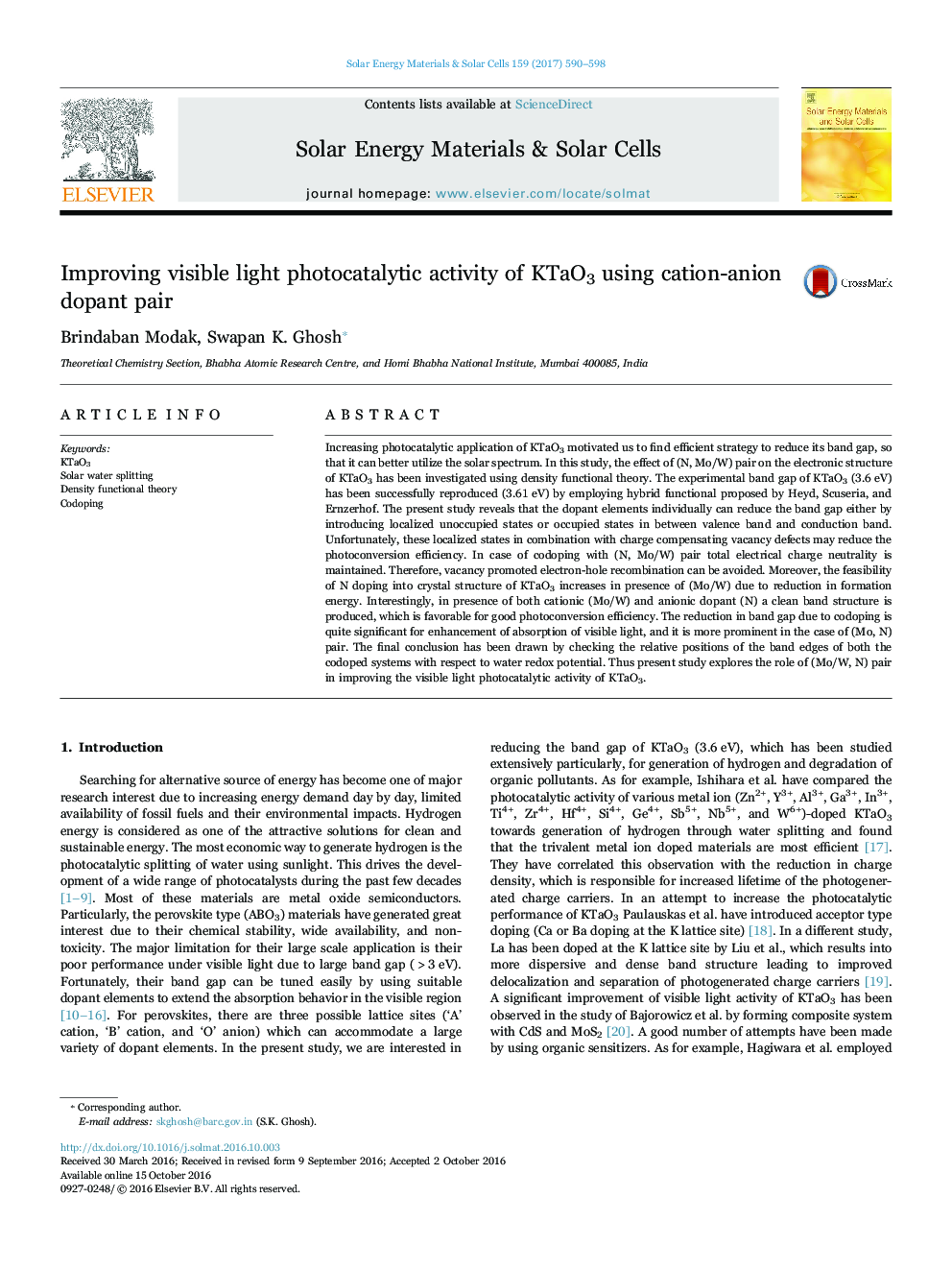| Article ID | Journal | Published Year | Pages | File Type |
|---|---|---|---|---|
| 6457603 | Solar Energy Materials and Solar Cells | 2017 | 9 Pages |
â¢Close agreement between calculated and experimental band gap of KTaO3.â¢Efficient strategy for significant band gap reduction without localized states.â¢Minimization of vacancy formation due to charge compensated codoping approach.â¢Controlled band gap tuning by (N, W)-codoping retains water splitting property.
Increasing photocatalytic application of KTaO3 motivated us to find efficient strategy to reduce its band gap, so that it can better utilize the solar spectrum. In this study, the effect of (N, Mo/W) pair on the electronic structure of KTaO3 has been investigated using density functional theory. The experimental band gap of KTaO3 (3.6Â eV) has been successfully reproduced (3.61Â eV) by employing hybrid functional proposed by Heyd, Scuseria, and Ernzerhof. The present study reveals that the dopant elements individually can reduce the band gap either by introducing localized unoccupied states or occupied states in between valence band and conduction band. Unfortunately, these localized states in combination with charge compensating vacancy defects may reduce the photoconversion efficiency. In case of codoping with (N, Mo/W) pair total electrical charge neutrality is maintained. Therefore, vacancy promoted electron-hole recombination can be avoided. Moreover, the feasibility of N doping into crystal structure of KTaO3 increases in presence of (Mo/W) due to reduction in formation energy. Interestingly, in presence of both cationic (Mo/W) and anionic dopant (N) a clean band structure is produced, which is favorable for good photoconversion efficiency. The reduction in band gap due to codoping is quite significant for enhancement of absorption of visible light, and it is more prominent in the case of (Mo, N) pair. The final conclusion has been drawn by checking the relative positions of the band edges of both the codoped systems with respect to water redox potential. Thus present study explores the role of (Mo/W, N) pair in improving the visible light photocatalytic activity of KTaO3.
Graphical abstractPresent study explore strategy of charge compensated codoping using (N, Mo/W) pair, which significantly reduces the band gap without encountering any localized midgap states. Although codoping with N and Mo leads to narrowing of band gap by larger extent, it may be important only for other visible light driven photocatalytic processes, and not for hydrogen generation through water splitting. On the other hand, for (N, W)-codoped KTaO3 the band edges are in suitable positions to satisfy the thermodynamic condition for overall water splitting.Download high-res image (144KB)Download full-size image
